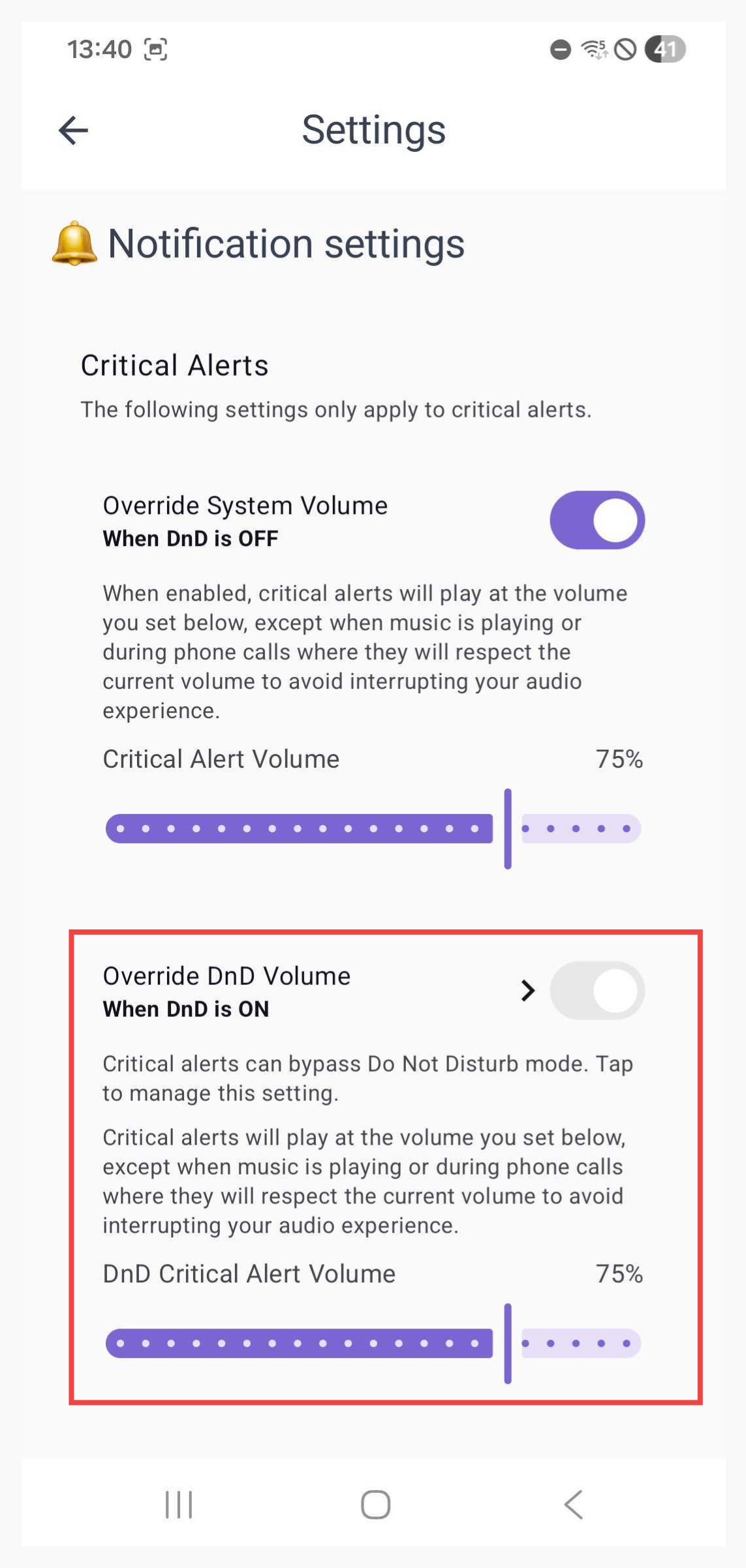Stay Informed, Always
All Quiet ensures you’re always in the loop with a variety of alerting channels, keeping your team alert and ready to respond:- Emails
- Push Notifications
- SMS
- Phone Calls
ENV = Test, consider leveraging our advanced incident routing capabilities.
Prioritize with Severity Levels
All Quiet categorizes incidents into three severity levels, helping you prioritize your response effectively:Critical: Immediate action required. Major impact with urgent attention needed.Warning: Potential for escalation. Address promptly to prevent negative effects.Minor: Non-urgent & low impact. Schedule resolution at your convenience.
Customizable Notification Preferences
To tailor our alerting to your needs, you can customize your settings underYour Account > Notifications.
You can activate different Channels (1) and decide to only receive alerts of certain severities for each channel (2). Also, you can add Smart Notification Delays (3) and filter alerting for certain incident actions (4). Last, confirm you phone number to active SMS and Call notifications (5).
Notification Preferences for Terraform-provisioned Users have to be provided via Terraform Ressource allquiet_user.
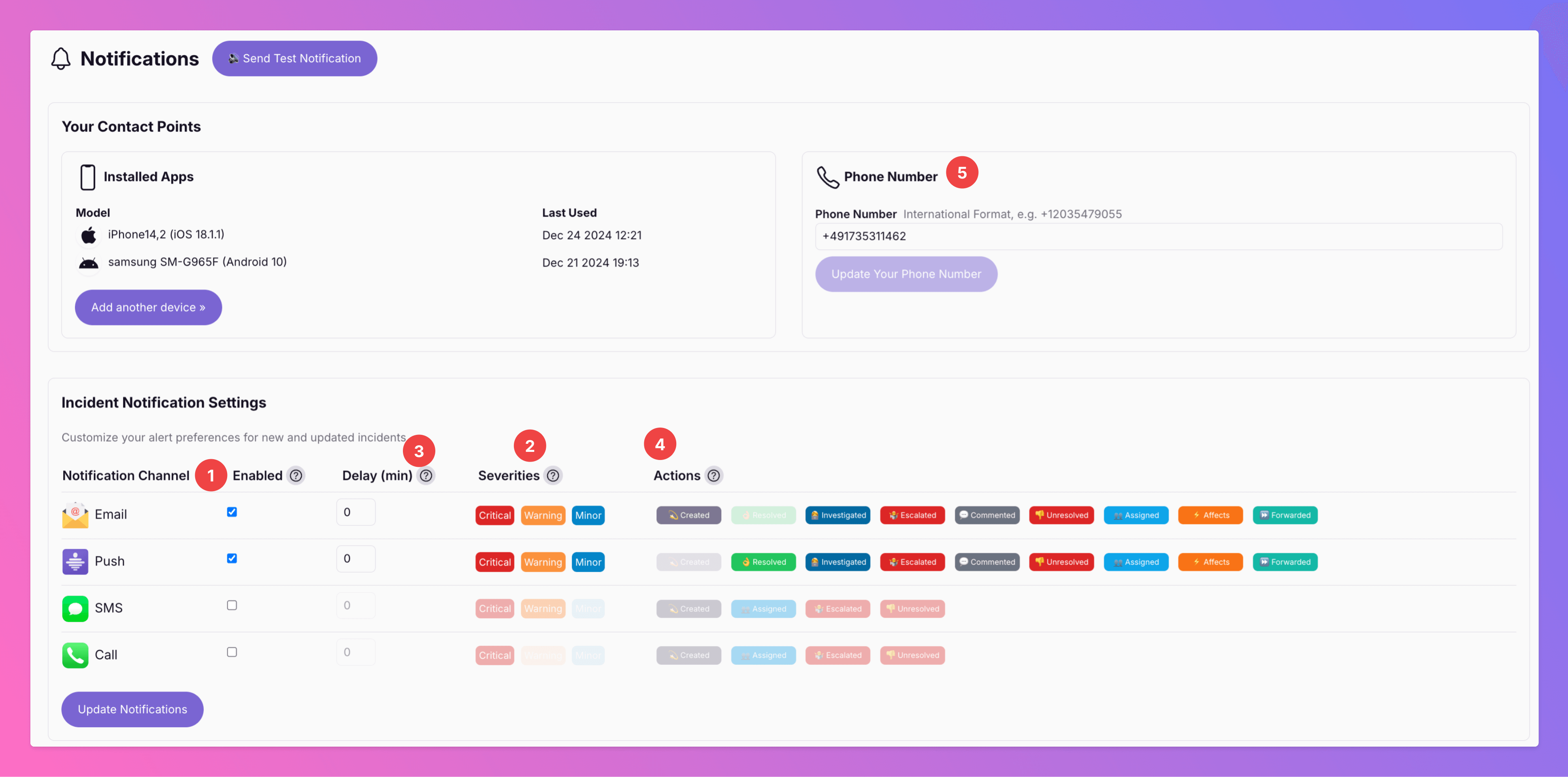
Channels
- Emails (to activate, confirm your email address)
- Push Notifications (to activate, download the App)
- SMS (follow instructions below to activate)
- Phone Calls (follow instructions below to activate)
Alert Severities
Alerts are tailored by default based on incident severity to ensure efficient notification:- Critical Incidents: all channels - Emails, Push Notifications, SMS, and Phone Calls.
- Warning Incidents: Emails, Push Notifications, and SMS.
- Minor Incidents: via Emails and Push Notifications only.
Smart Notification Delays
Minimize disruptions by setting delays (1 to 60 minutes) on certain notifications. If an incident is unresolved or unattended within this timeframe, you’ll be alerted after the delay, ensuring notifications are meaningful and necessary. Our goal is to maintain all quiet, as we believe calm teams are productive teams.Notifications per Action
You can active and deactivate each notification channel for certain incident actions, e.g. you can decide to receive an email for the “Forwarded” action but deactivate Push Notifications for this kind of action.SMS and Phone Calls
Ensure you’re promptly informed of every incident through SMS and voice calls by following these easy steps:1
Step 1: Navigating to 'Notifications' under 'Your Account'
Start by accessing your personal notification settings. From the main dashboard, click on
Notifications right under the Your Account button.2
Step 2: Entering Your Phone Number
Note, that you can only confirm your phone number after confirming your email addreess. In the ‘Phone Number’ field, input your number using the international format. For instance, you might enter: +12035479055. After entering, you will receive a message to confirm.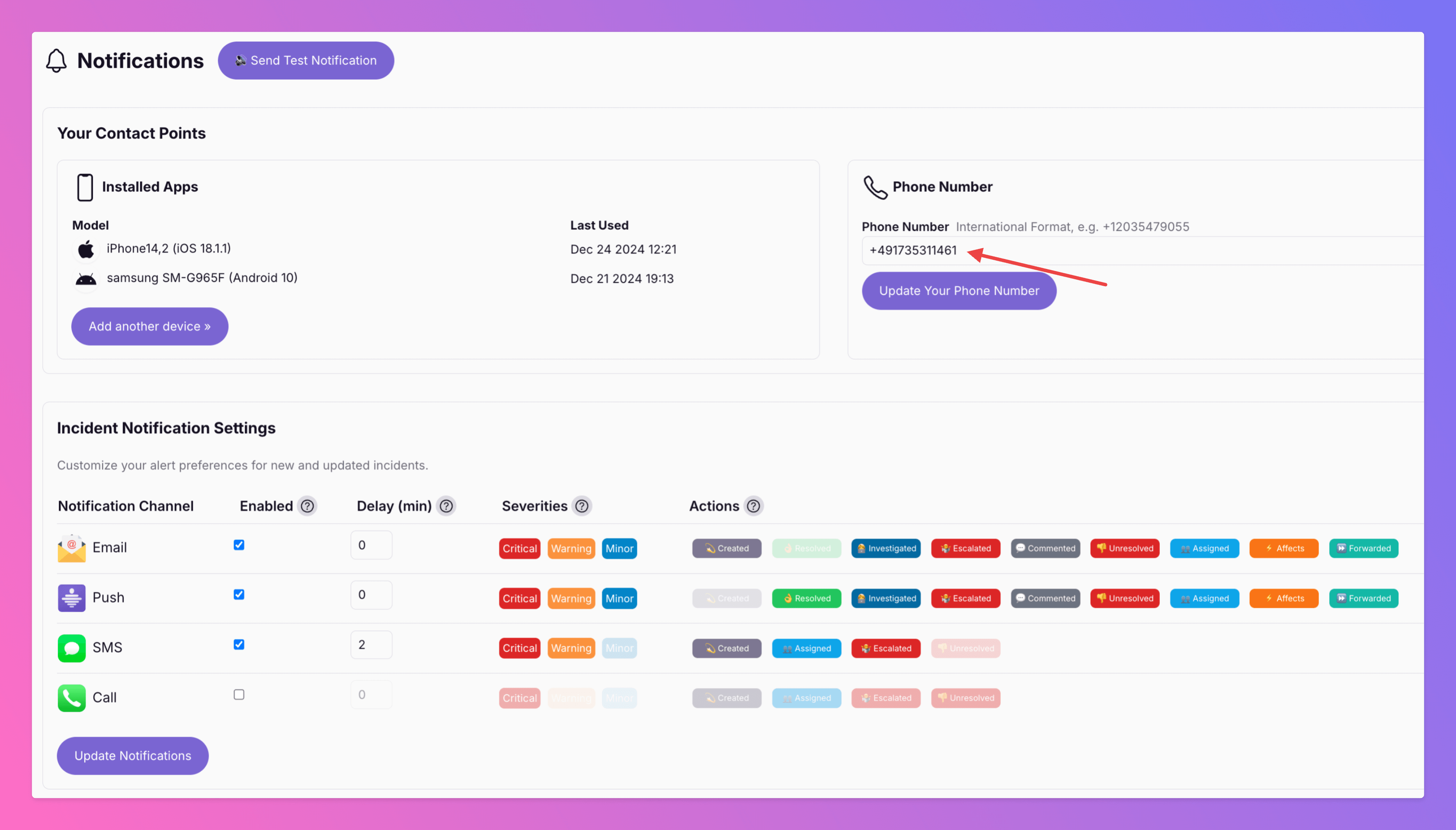

3
Step 3: Choosing Your Notification Preferences
- For SMS Notifications: Make sure the box under ‘Enabled’ is ticked for SMS if you wish to receive SMS updates on every incident change.
- For Phone Calls: Make sure the box under ‘Enabled’ is ticked if you’d like All Quiet to call you.
4
Step 4: Delaying SMS & Phone Calls
You can delay SMS & phone calls like all other notification channels to make All Quiet work for you.
Phone calls are triggered only once, at the moment an incident is opened or escalated.
Calls are reserved for incidents marked with the severity level of “Critical”. You can adjust this setting.
We’ll always call you from our fixed numbers.
Brazil: +55 11 3230 2142 |
Rest of the World: +1 203 5479055, +1 833 5860244, +1 833 7411613
Our current rate limits to protect the functionality of the platform for all customer: SMS: 8 SMS per unique phone number within 1 minute | SMS: 1 SMS per unique phone number
within 1 second | Calls: 8 Calls per unique phone number within 1 minute | Calls: 1 Call per unique phone
number within 1 second
Native App Push Notifications
Push notifications in All Quiet are designed to keep you informed about incidents, whether they’re minor updates or urgent emergencies. Of course, notifications will only be sent once you have granted the necessary permissions on your device. Here’s how notifications work on both iOS and Android:iOS
From version 1.22.0
By default, All Quiet sends push notifications for all incident updates. These notifications respect your device’s sound and focus settings - if your phone is on silent or in a Focus mode, you may not hear a sound, but you’ll still see the notification banner.
Normal notifications use your iPhone’s system notification volume.
Critical Alerts
For incidents marked as “Critical,” you can enable “Critical Alerts” in the app. When enabled, these notifications will break through silent and focus modes, ensuring you never miss an urgent alert. You can control this permission in your iOS settings.Critical Alerts will only be triggered when the incident’s severity is
When enabled, critical alerts use the volume you set in the All Quiet app’s settings screen, not the system volume.
Critical. This feature allows All Quiet notifications to break through silent and “Do Not Disturb” modes. When enabled, critical alerts use the volume you set in the All Quiet app’s settings screen, not the system volume.
1
Granting Push Notification Permissions
After logging in for the first time, users are encouraged to authorize push notifications. Users also have the option to activate “Critical Alerts”. Upon selecting this checkbox, the iOS system will prompt for the necessary permissions, as depicted in the subsequent screen.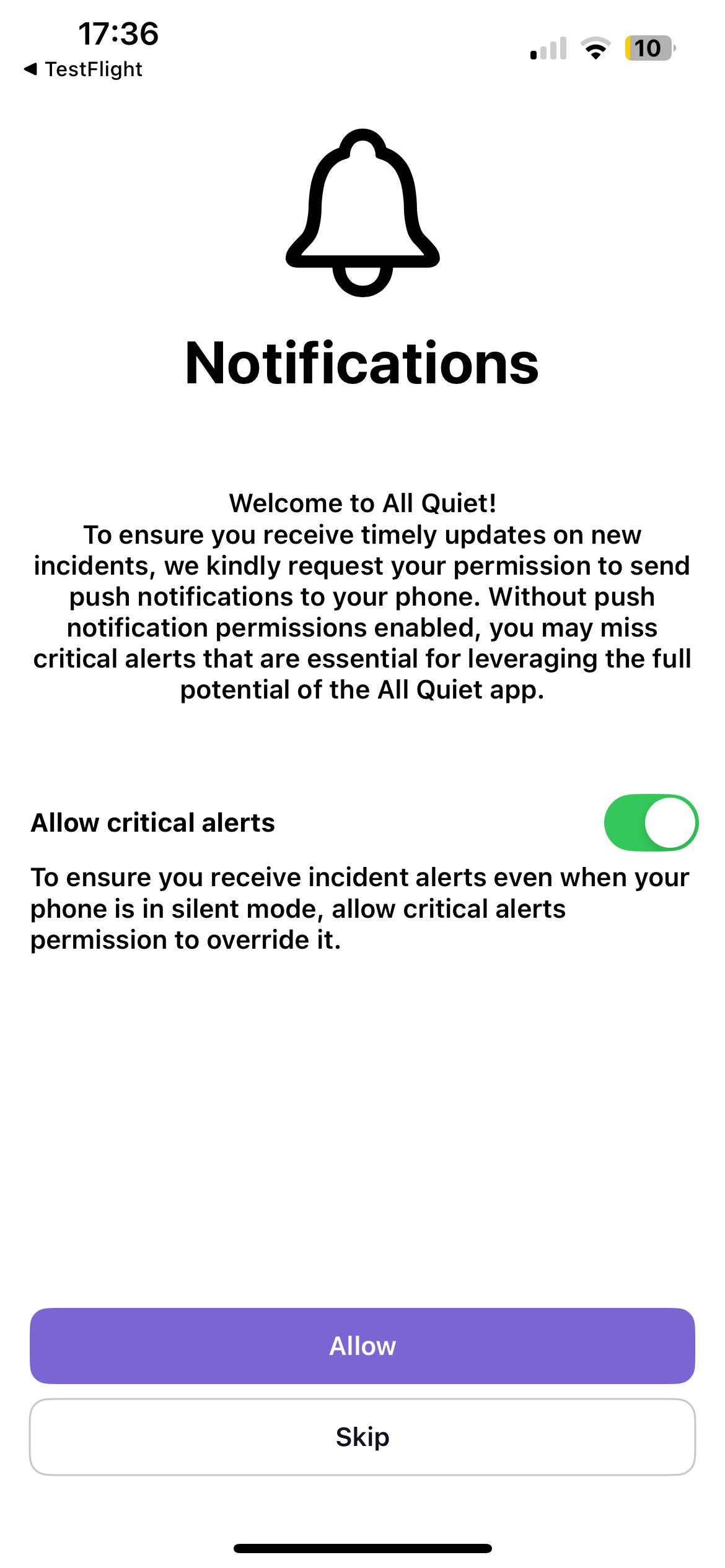

2
Allowing 'Critical Alerts'
The screenshot depicts the operating system’s request for permission to enable critical alerts.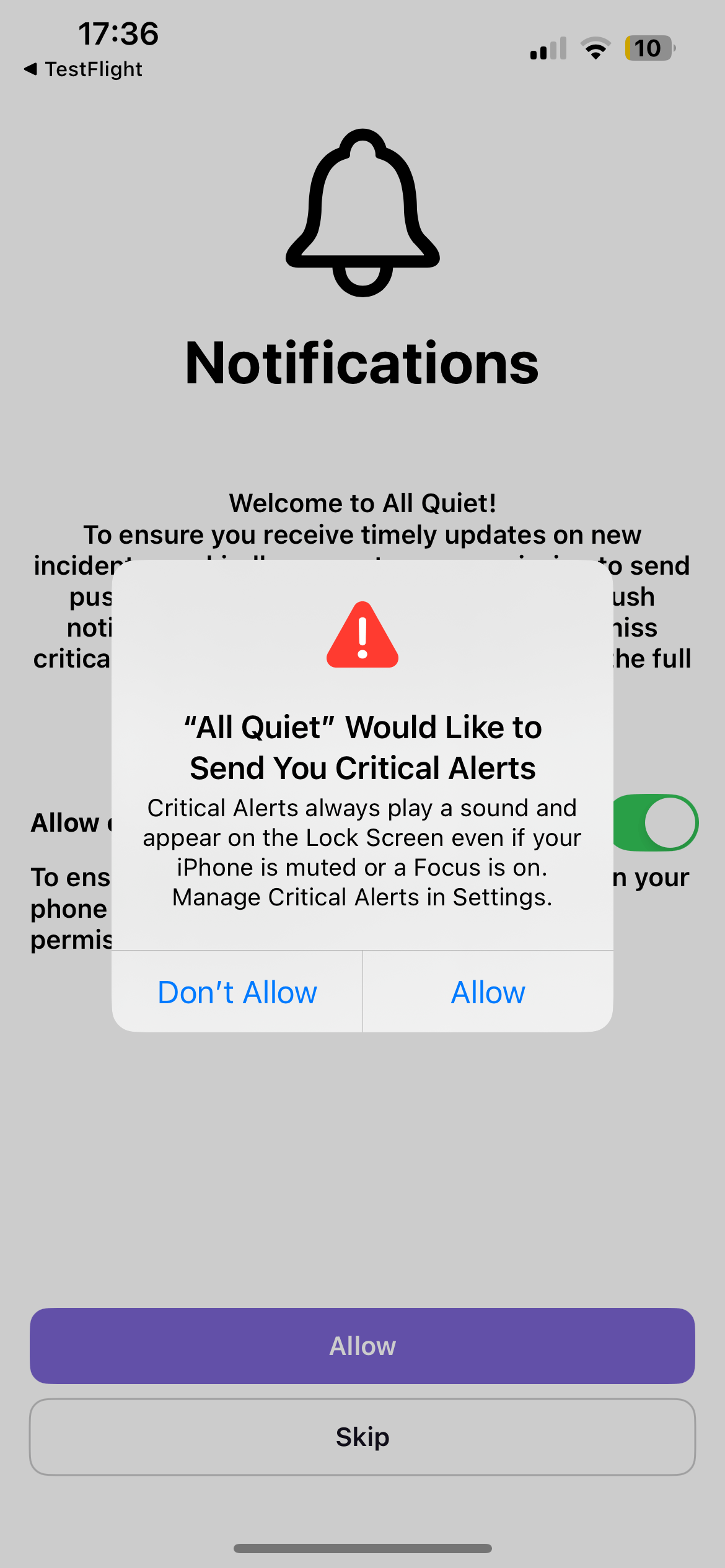
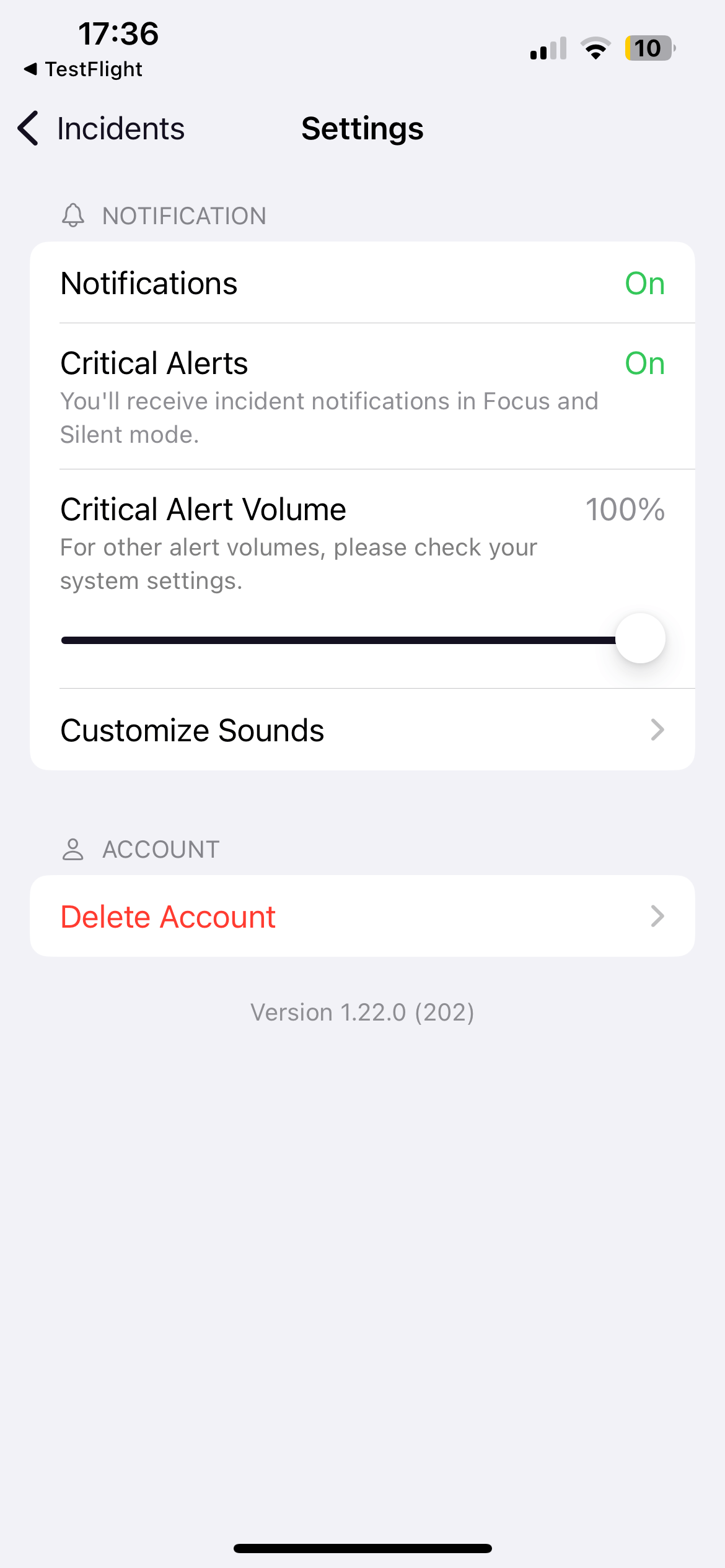


Do Not Disturb (DnD) & Other Focus Modes
Normal notifications will not make a sound if DnD or Focus is enabled, but critical alerts (if allowed) will always get through with sound and vibration, even if your phone is muted.When DnD or Focus is enabled, only critical alerts (if allowed) will play a sound, using the app’s critical alert volume setting.
Android
From version 1.20.0
All Quiet sends push notifications for all incident updates. These notifications follow your device’s standard notification settings—if your phone is on silent or DnD, you may not hear a sound, but you’ll still receive the notification. You can fine tune your notification preferences in the “Notification Channel Settings” for the All Quiet Incident Channel, under “Settings”.
Normal notifications use your Android device’s system notification volume. When receiving a notification while playing media or in a call, we adapt the volume to the media / the voice call volume.
Critical Alerts
All Quiet for Android gives you fine-grained control over how critical alerts behave, even when your phone is muted or in Do Not Disturb (DnD) mode.-
There are two separate toggles in the app’s notification settings:
- Override System Volume (When DnD is off): When notifications are allowed, enabled by default. When this is on, critical alerts will play a sound even if your phone is in silent mode (but not in DnD). You can set a custom volume for these alerts in your notification settings. When receiving a notification while playing media or in a call, we adapt this volume to the media / the voice call volume.
- Override Do Not Disturb (DnD): Must be opted-in. When enabled, critical alerts will play a sound even if your phone is in DnD mode. This also has its own volume setting (see DnD section below for more details). When receiving a notification while playing media or in a call, we adapt this volume to the media / the voice call volume, too.

- Both toggles allow you to set the alert volume independently from your device’s system volume.
- You can always adjust these settings in the All Quiet app under notification preferences.
Critical alerts will only break through silent or DnD modes if the corresponding toggle is enabled. The sound volume for each scenario is determined by the app’s settings, not your device’s system volume.
Do Not Disturb (DnD)
Normal notifications will be silenced by DND, but critical notifications (if DND override is enabled) will break through and alert you with sound and vibration.When DND is enabled, only critical alerts (if allowed) will play a sound, using the app’s DnD override alert volume setting. When receiving a notification while playing media or in a call, we adapt the volume to the media / the voice call volume.
1
Do Not Disturb (DnD) Volume Override for Critical Alerts
The first screenshot shows our notification settings after enabling normal notifications. Users are introduced to the option of overriding the “Do not disturb” (DnD) mode. To override the DnD mode, you need to grant the app permission to override system DnD settings. The system settings can be opened by clicking the chevron next to “Override DnD Volume”.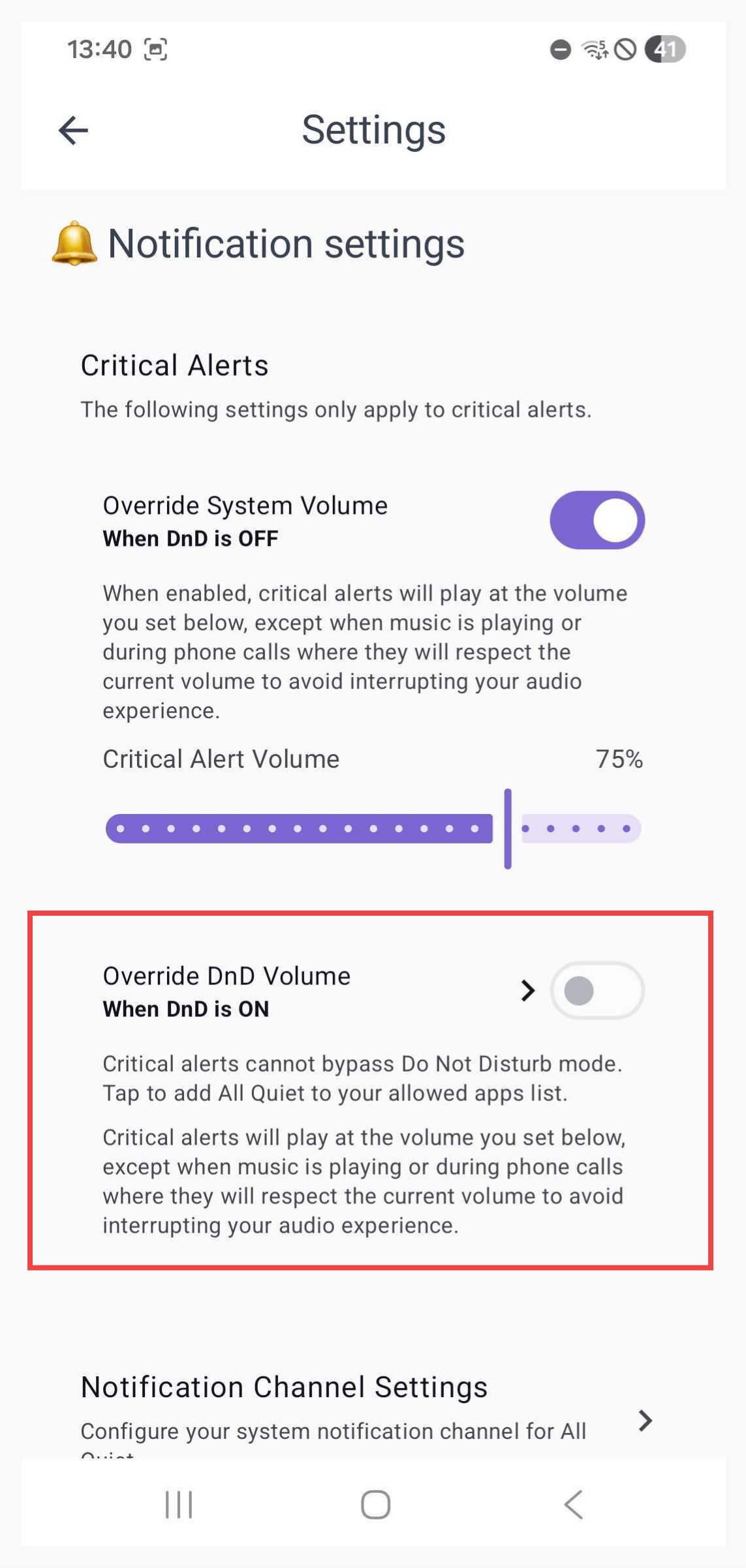

2
Overriding 'Do Not Disturb' Mode in System Settings
You’re forwarded to the Android system settings for Do not Disturb. Make sure to allow “App notifications” for All Quiet.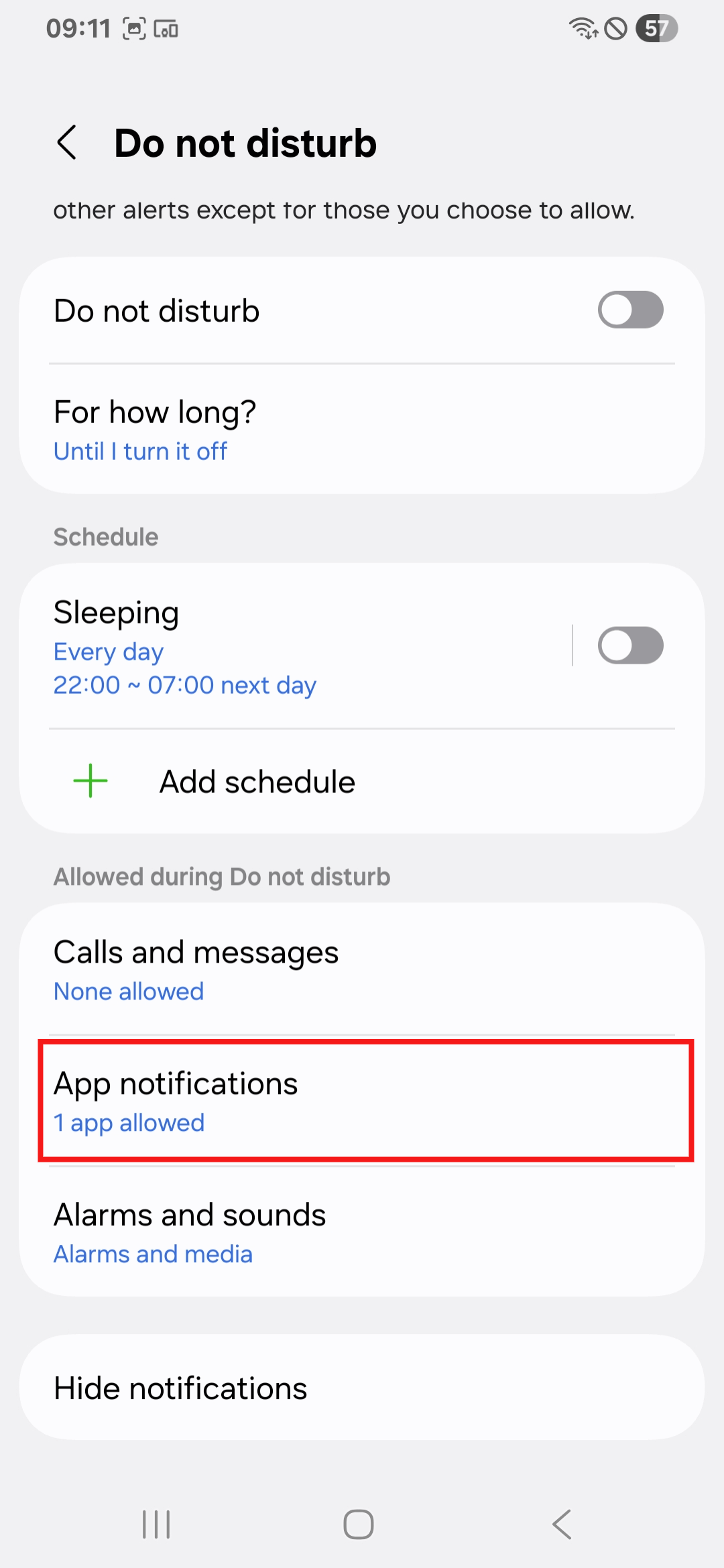

3
DnD Override Successfully Activated
Returning to the Notification settings screen, you can see that the DnD override is now activated. You can adapt the volume to your preference. If needed, you can also disable the DnD override from here.